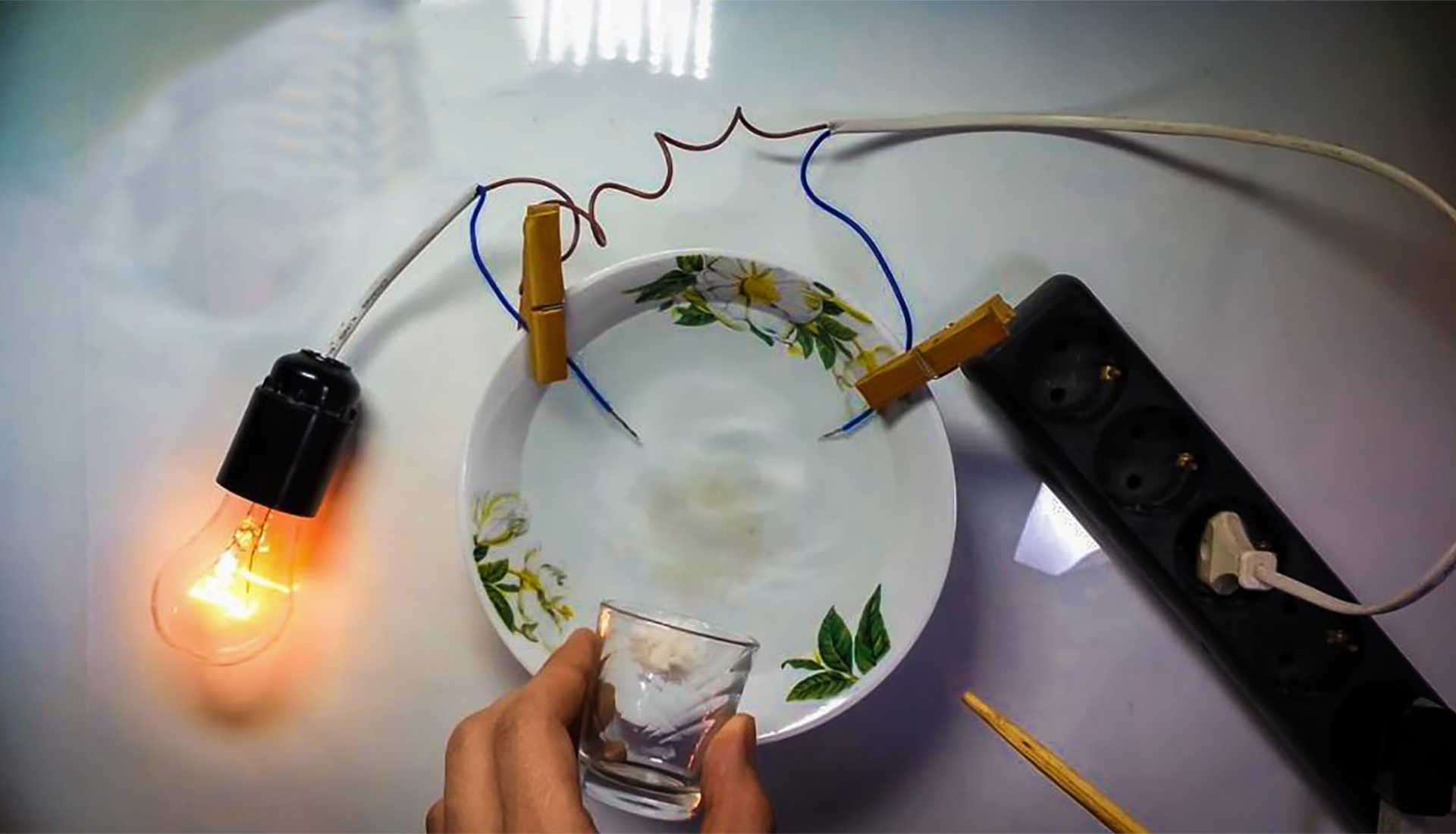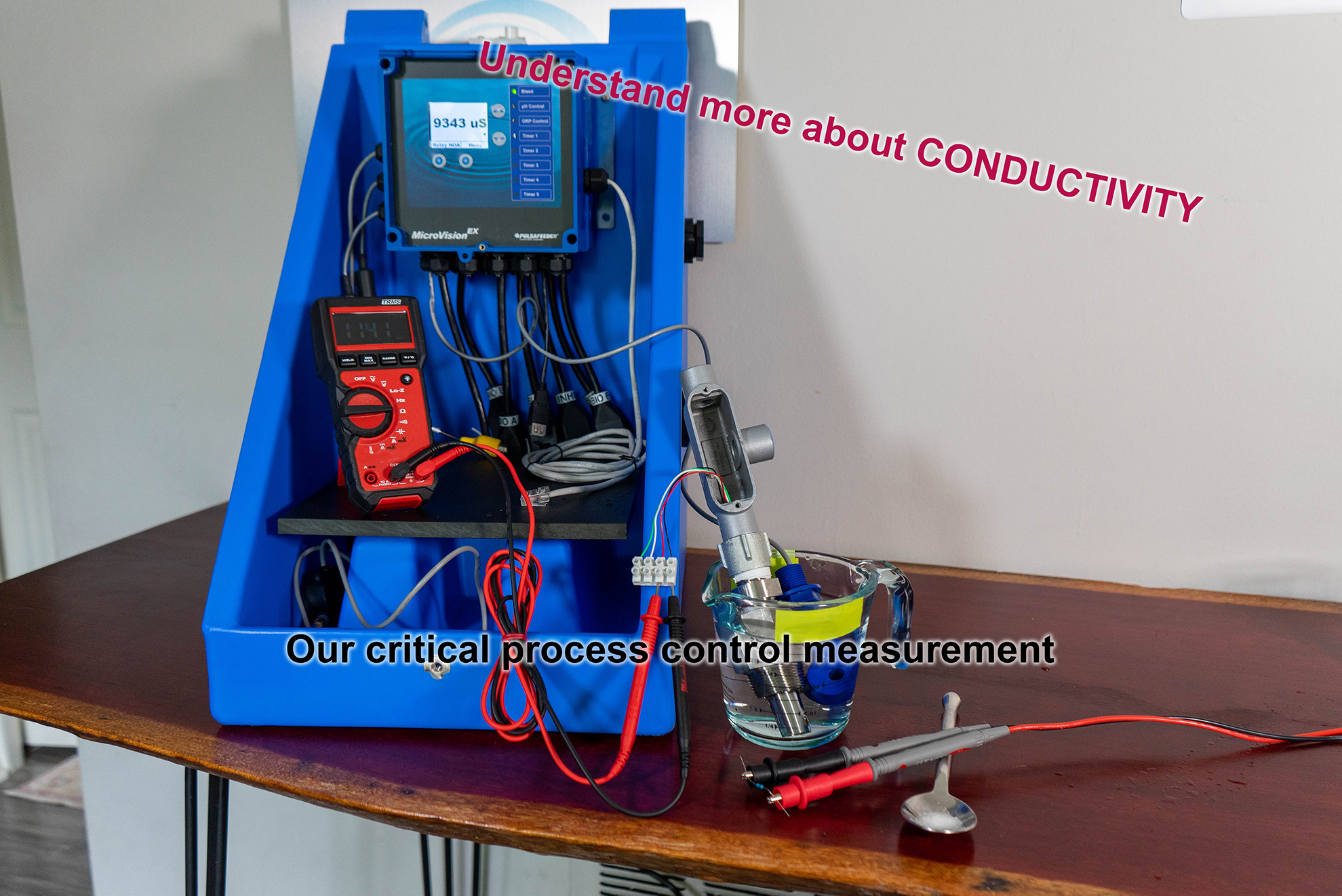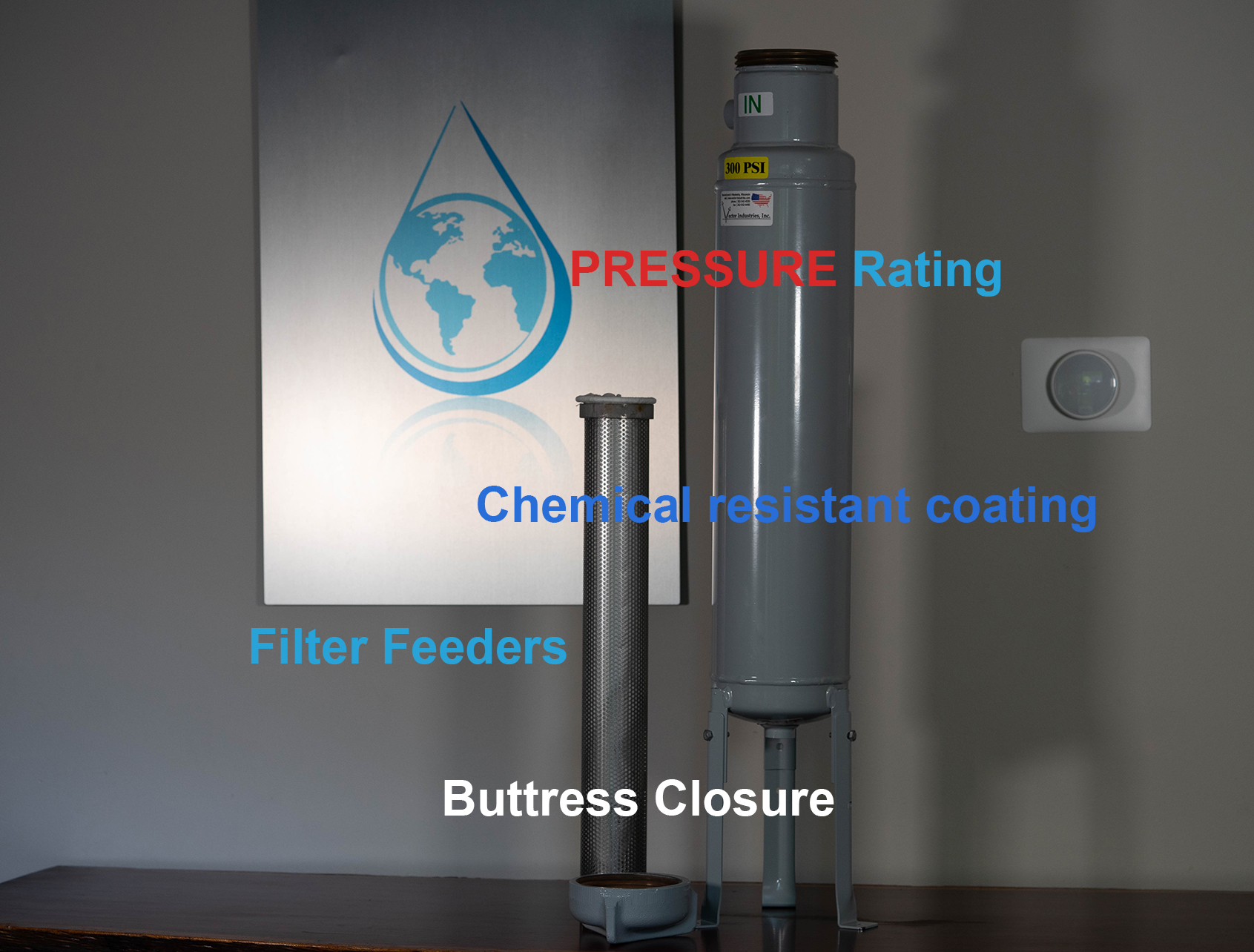For those of us working daily with cooling tower and boilers, a conductivity measurement is one of your vital signs of system health. A heartbeat. Based on a make-up water profile, system parameters, and additional chemistry water treaters can determine an optimal range for conductivity. Dialing in this number can make efficient use of water and chemistry while preserving system longevity and process efficiency. During service visits, a preliminary conductivity measurement on a trusty handheld is an indicator of if a visit is going to run long. But what is conductivity?
Conductivity, in water treatment, is how well the process solution conducts electricity. However, we do not care about the ability of the process to conduct electricity, or do we? We care about dissolved solids and the point of saturation where dissolved solids precipitate out of solution and begin scaling our process. Pure water is an insulator, meaning it does not conduct electricity well. However, introducing salt into water makes water more conductive. You may have done a test like this in your high school chemistry class. Most water we deal with has dissolved solids, even RO water is not 100% pure water. As water evaporates, the solids are left behind and concentrated. Many people use the term cycles of concentrations or concentration ratio to express this process. The conductivity measurement is a good method of tracking total dissolved solids and regulating scale probability and resource management.
How is a conductivity measurement made? The theory is based on Ohms law. V = IR. We care about conductivity which is R in the equation solving for R yields R = V/I. The units for R is Ohms but you might be more familiar with µS/cm. Well… Siemens is equivalent to I/V so substituting we get (1/R) = S. R being the resistance to electrical conductance basically means that as R gets larger S gets smaller and vice versa. µ is just the Greek micro prefix for 10^(-6) to scale the number appropriately and lastly we need a definition of conductivity relative to an actual dimension which is where the “/cm” portion comes into the equation. We are basically saying: the solution measured over a single centimeter is this conductive. However, there is another factor is important for an accurate conductivity measurement as it relates to dissolved solids. The diameter of an atom is dependent on temperature. When more heat is present valance electrons tend to be further from the nucleus, as the atom has more energy, and cooler temperatures bring electrons closer to the atomic nucleus. This causes molecules to be larger and things to spread out. This can mess with our fixed conductivity measurement as our “per centimeter” value will yield a different result based on temperature expanding and contracting the solution. Temperature compensating a conductivity measurement helps us better track the total dissolved solids.
Toroidal vs Standard
The standard conductivity probes reading begins to drift and read inaccurately when the probe begins to foul. The toroidal probe reading holds strong despite build up forming.
The probes: there are really only two technologies used widely to measure in process conductivity. Contacting style probe and toroidal probes. They are both valid methods of getting a measurement but function drastically differently. Contacting probes have two exposed electrodes and they send a defined electrical signal through a defined distance. Based on the strength of the signal you can gauge conductivity of the solution. Toroidal probes work using electromagnetism. There are no electrodes contacting the solution but an encapsulated electromagnet. A defined signal is sent through the electromagnet and then the intensity of the magnetic field is measured. Field intensity will vary based on solution conductivity then we can map the 3 dimensional measurement to units we are familiar with “µS/cm”. An important note is contacting style probes are prone to fouling. The electrical signal actually invites scale formation to occur on the sensitive probe and once there it drastically interferes with the measurement. Toroidal probes take a very broad measurement to gauge conductivity, a thin build-up causes negligible drift to the measurement.



